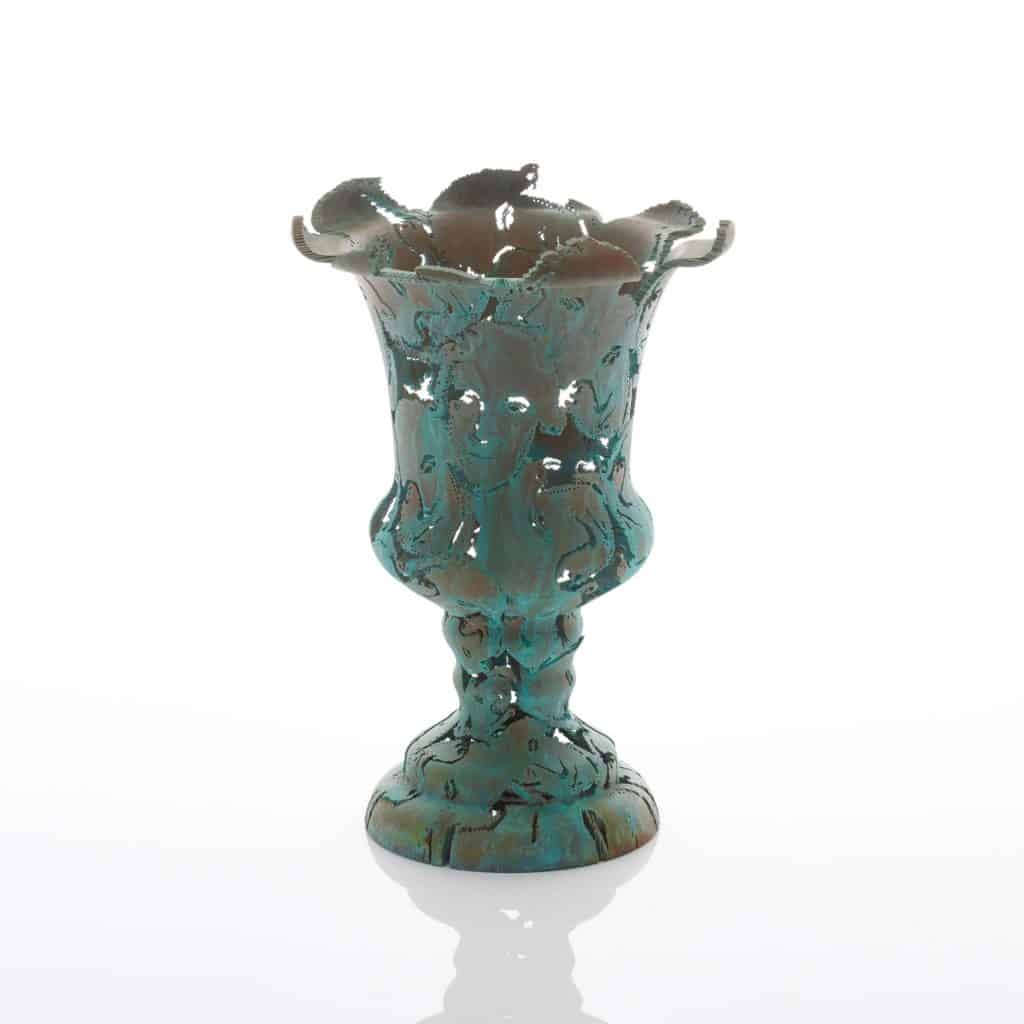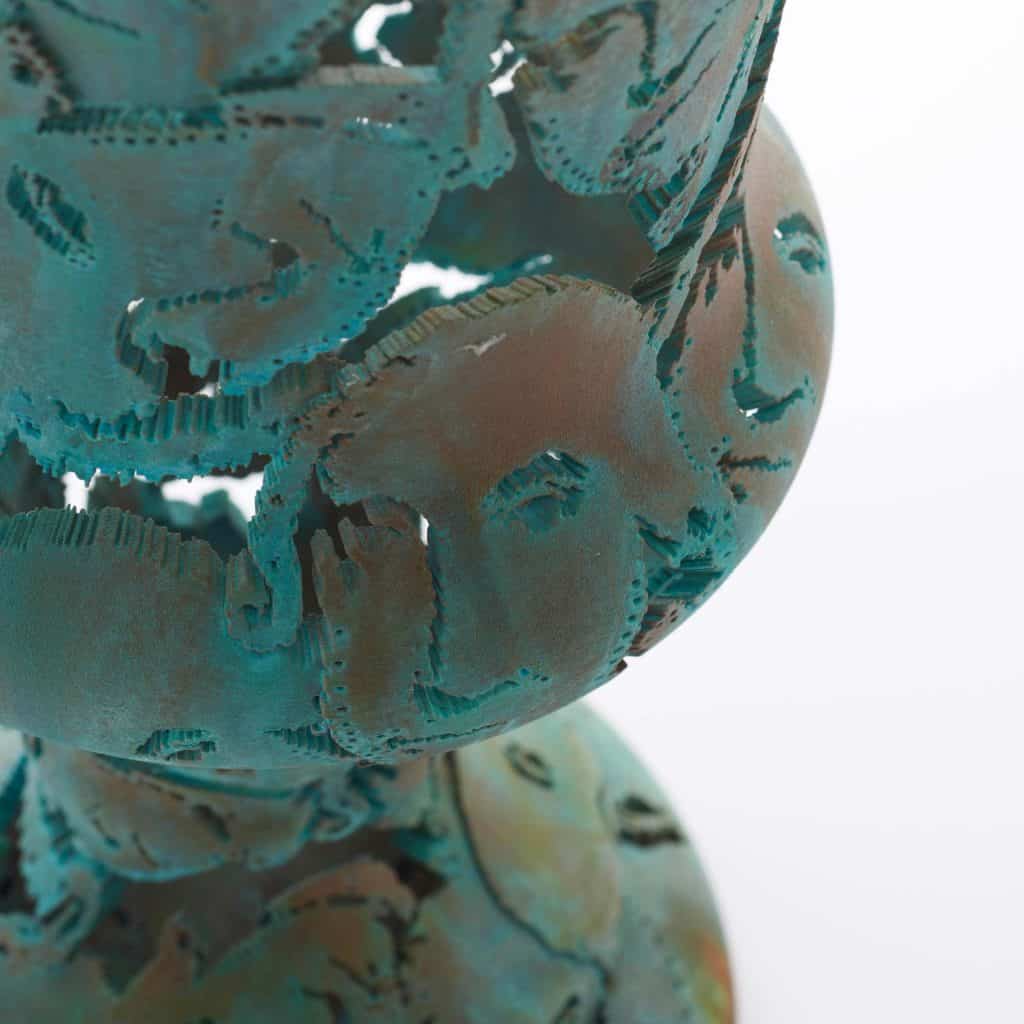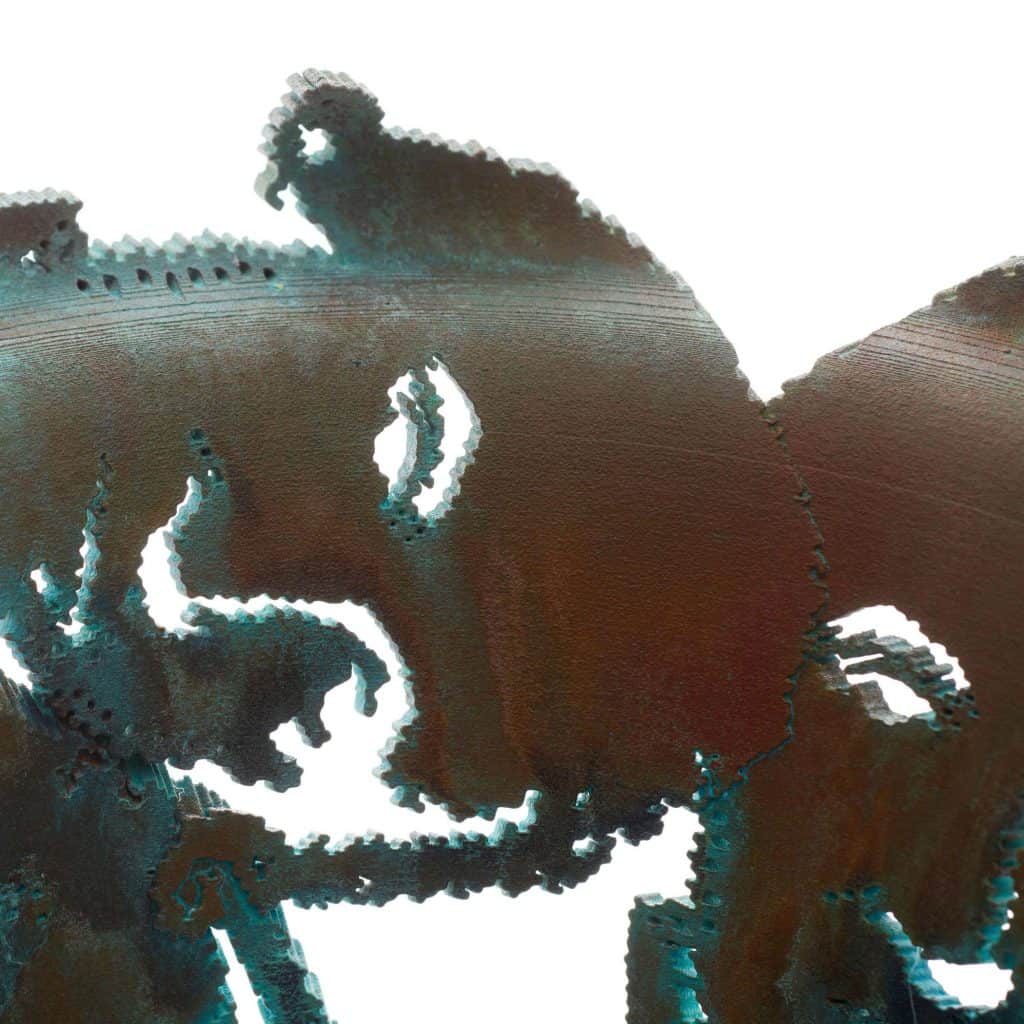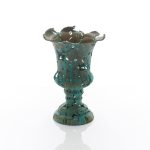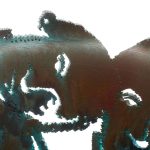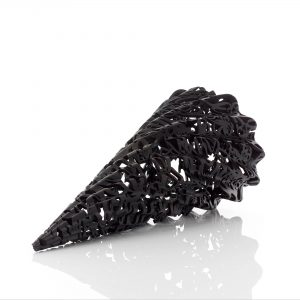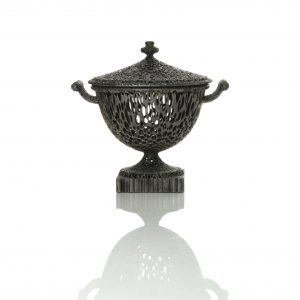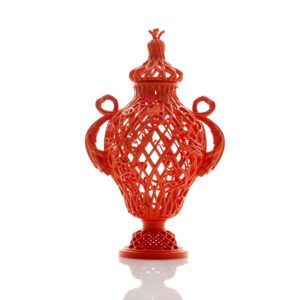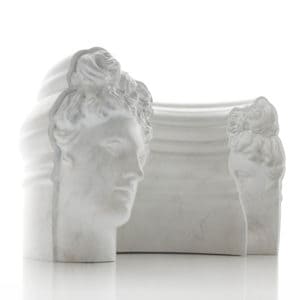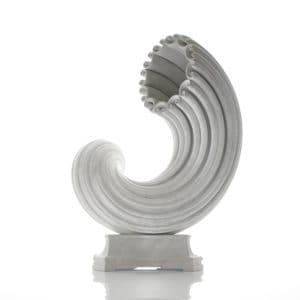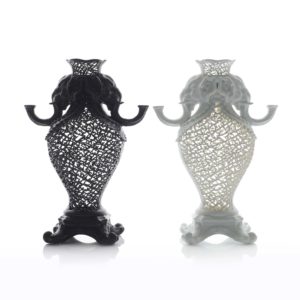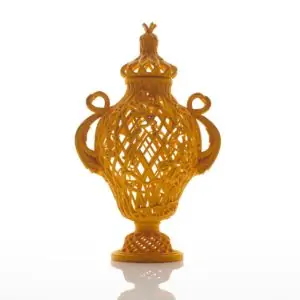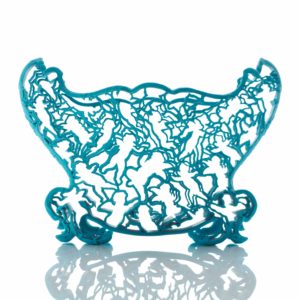More about The Watt Vase, 2015
'James Watt’s name is associated with the steam engine, which became the chief power source of the Industrial Revolution after he made improvements to the less efficient Newcomen steam engine.
He was a member of the Lunar Society, a group of free thinking scientists and industrialists including Joseph Priestley, Erasmus Darwin, Josiah Wedgwood and William Withering that met together during the late 18th and early 19th centuries. The meetings were lively affairs, where all the latest ideas and inventions were discussed and scientific experiments carried out. The Lunar Society made an enormous impact, largely due to their wide-ranging interests that treated the arts, humanities and sciences as compatible equals.
After running a success business with Matthew Boulton, he spent his retirement experimenting with new methods of reproducing classical sculptures. In his Heathfield house workshop, Watt created two copying machines, 'one to make reduced-size copies of an original, while the second was intended to make equal-size copies, a much more difficult technical proposition.'

Whilst on a recent visit to the Science Museum in London, I saw a display of Watt’s workbench alongside which were a group of busts also found in his Heathfield workshop. One piece stood out, a bust of the man himself. However, this one was produced by 3D printing as the 'original mould was too fragile to allow a plaster cast to be taken. So it was examined with a colour triangulation scanner to produce a perfect digital 'cast', enabling a sculpture to be created.'
It made me wonder how James Watt would have employed the new technologies that we now have as makers, artists and designers. So the James Watt vase was created to bring these two worlds together, using classical references, a portrait of James Watt, 3D printing and a bespoke metalising process.'
- Michael Eden

 Whilst on a recent visit to the Science Museum in London, I saw a display of Watt’s workbench alongside which were a group of busts also found in his Heathfield workshop. One piece stood out, a bust of the man himself. However, this one was produced by 3D printing as the 'original mould was too fragile to allow a plaster cast to be taken. So it was examined with a colour triangulation scanner to produce a perfect digital 'cast', enabling a sculpture to be created.'
It made me wonder how James Watt would have employed the new technologies that we now have as makers, artists and designers. So the James Watt vase was created to bring these two worlds together, using classical references, a portrait of James Watt, 3D printing and a bespoke metalising process.'
- Michael Eden
Whilst on a recent visit to the Science Museum in London, I saw a display of Watt’s workbench alongside which were a group of busts also found in his Heathfield workshop. One piece stood out, a bust of the man himself. However, this one was produced by 3D printing as the 'original mould was too fragile to allow a plaster cast to be taken. So it was examined with a colour triangulation scanner to produce a perfect digital 'cast', enabling a sculpture to be created.'
It made me wonder how James Watt would have employed the new technologies that we now have as makers, artists and designers. So the James Watt vase was created to bring these two worlds together, using classical references, a portrait of James Watt, 3D printing and a bespoke metalising process.'
- Michael Eden 
